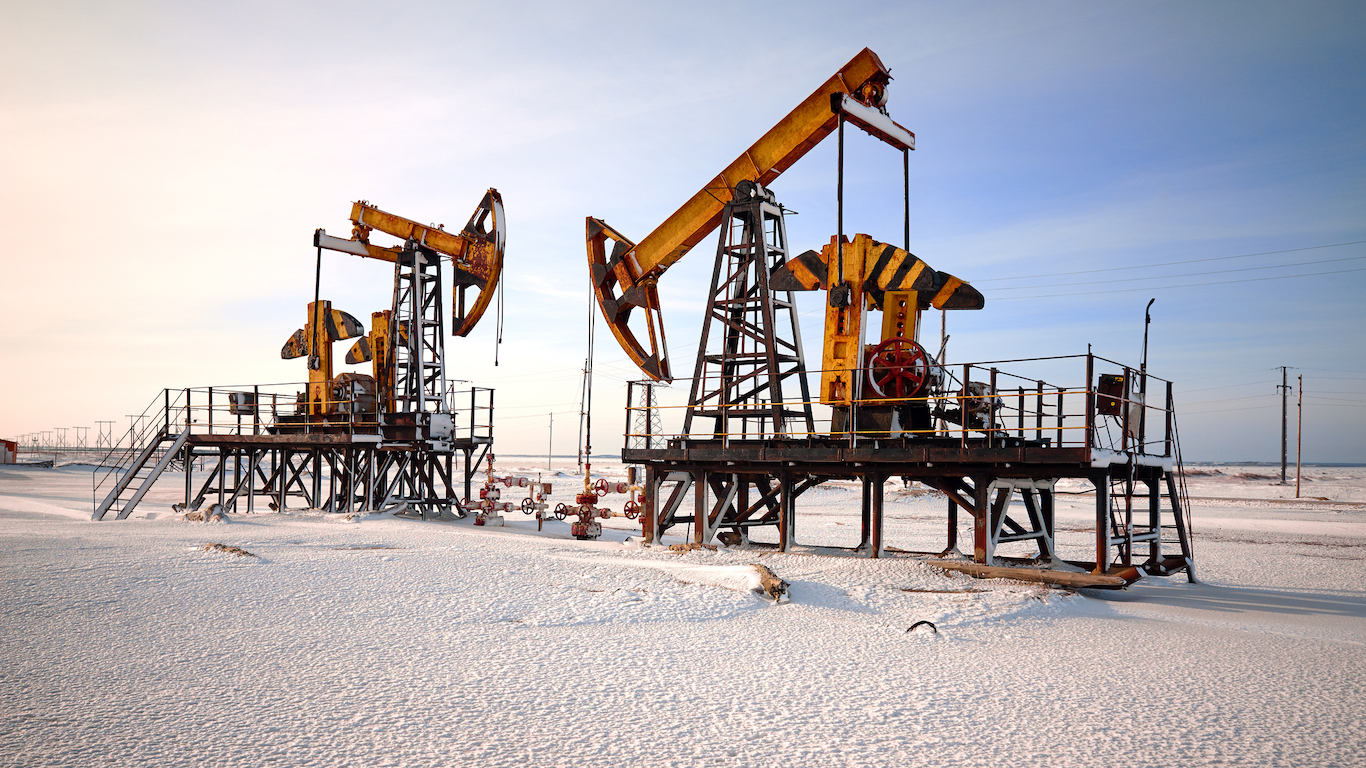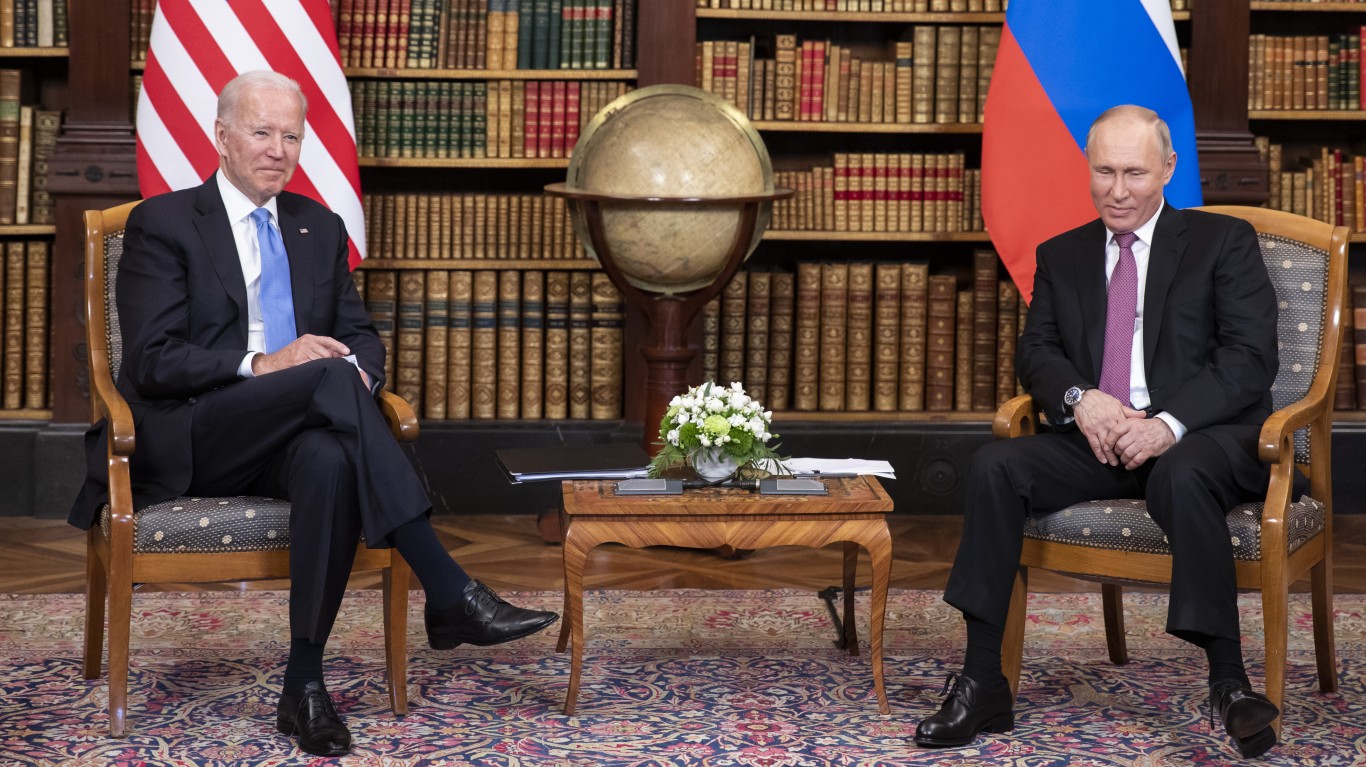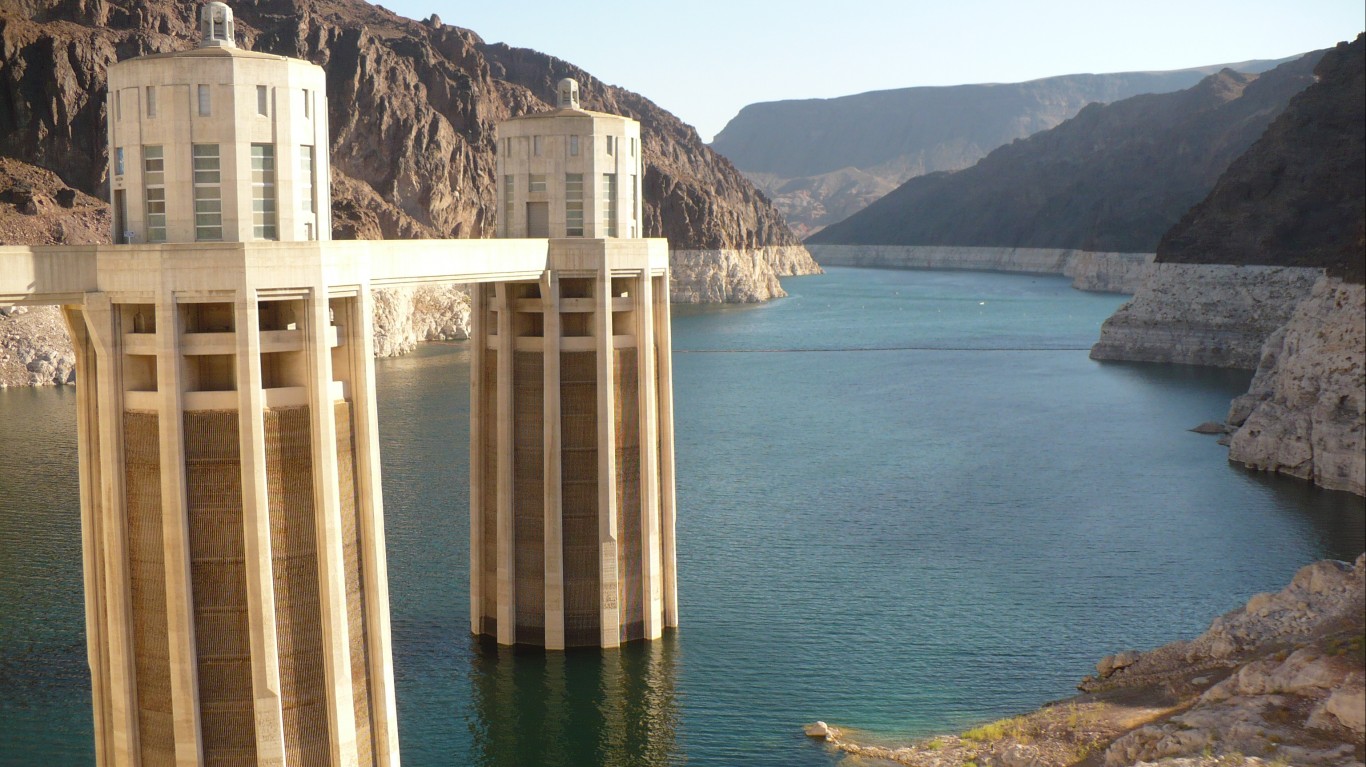
Last year was marked by geopolitical, economic, and ecological tumult. Global inflation surged to historic highs, while worsening droughts gave rise to humanitarian crises in many parts of the world. And Russia’s invasion of Ukraine was the largest military movement in Europe since World War II. These and other factors have set the stage for the year ahead – and the challenges to global stability and development in 2023 are no less daunting than those that defined 2022.
A recent report from Eurasia Group, a New York-based political risk analysis and consulting firm, identified the top 10 risks facing the world in 2023. The report, “Top Risks 2023,” offers detailed predictions of what the largest threats to global stability, peace, and prosperity will be in the coming year.
24/7 Wall St. picked nine of Eurasia Group’s top 10 risks of 2023 and reviewed them along with the Group’s analysis of each risk. The risks on this list are global in scope and cover issues related to technology, politics, economics, international relations, and environment. The risks on this list are ranked by their likelihood, imminence, and potential impact – from the lowest to the highest.
An underlying feature of several of the top risks in the coming year is a move toward authoritarianism and increased isolation of several of the world’s most powerful countries. China’s President Xi Jinping has successfully consolidated power to a degree not seen since Mao Zedong. Meanwhile, Russia’s war in Ukraine has left the country diplomatically and economically isolated from much of the rest of the world. Iran’s ongoing nuclear program, coupled with widespread domestic upheaval, has had similar consequences.
These developments have given rise to greater uncertainty in the world in 2023. Without checks and balances, oversight, or tolerance for dissent, governments in Beijing, Moscow, and Tehran are more prone to missteps that could have far-reaching consequences, Eurasia Group explains. (These are the nine leaders who have the power to destroy life on Earth.)
Some of the other top risks in 2023 are coming directly from the United States. The anticipated proliferation of advanced artificial intelligence in the coming year will likely result in widespread disinformation and further erode democratic institutions. And the U.S. is already among the most politically polarized and dysfunctional advanced democracies in the world. (Here is a look at America’s most politically divided cities.)
According to the report, a global recession, an energy crisis, and continued ecological catastrophe are also among the top threats facing the world in the coming year.
Click here to see the 9 biggest threats the world will face in 2023.
9. Worsening water scarcity
Continued severe drought in 2022 caused water levels to recede and worsened the food crisis in Africa. In Europe and Asia, too, as rivers dried up, trade was affected. In the Western U.S., drought led to water usage cutbacks. 2023 is forecast to be yet another dry year, with river levels hitting new lows and conflicts over access to water flaring up in the Middle East and Africa. Countries are unequipped to manage the problem, according to Eurasia Group, and policy makers will likely employ short-term emergency measures that will prove woefully inadequate.
In the United States, the problem extends back decades. Lake Mead, a reservoir in Nevada and Arizona, formed by the damming of the Colorado River, has lost about 170 feet of water level since 2000. Due to the ongoing megadrought in the West, decisions will have to be made about water allocation, including to farmers. Some farmers may be paid to forgo the year’s harvest for the sake of water conservation in 2023.
In Europe, Norway may have to reduce hydroelectricity exports, putting stress on its relationships with Netherlands and Germany, and low water levels in the Rhine and Po rivers may hamper inland shipping and reduce economic activity.
[in-text-ad]

8. Political polarization in the United States
For most Americans, and much of the world, the 2022 midterm election results were a reason for optimism, as all candidates for governor and secretary of state who denied the legitimacy of President Joe Biden’s 2020 electoral victory were defeated. Still, many others were elected to Congress and other state positions, and it bears pointing out that the U.S. remains among the most politically polarized and dysfunctional advanced democracies in the world.
According to a recent poll conducted by the Pew Research Center, 62% of Republicans have a “very unfavorable” view of Democrats, and 54% of Democrats have a similarly negative view of Republicans. Such polarization has reduced the efficiency of the federal government, and state governments are stepping in to fill the void. This diversion undermines the viability of the U.S. as a long-term investment for both domestic and international business and reveals the real and growing threat of political violence.

7. Deceleration in global development
The last two generations have been marked by an exceptional acceleration of global development. Over a billion people have escaped extreme poverty, infant mortality fell, life expectancy rose, and from 1998 to 2021, the global economy tripled in size. With the onset of the COVID-19 pandemic, in addition to Russia’s war in Ukraine and surging inflation, progress has stalled and even reversed course, and that trend will likely continue into 2023, according to Eurasia Group.
Five years of human development were lost during the pandemic, according to U.N. estimates. Life expectancy in the U.S. fell for the second year in a row in 2021, according to the Centers for Disease Control and Prevention, and over 90% of countries reported a decline in human development in 2020 or 2021. Inflation will continue to slow global economic growth, while the war in Ukraine will increase food insecurity in much of the world. The ranks of the global middle class will continue to contract as more people are pushed into extreme poverty.
These factors will disproportionately impact women and girls around the world, continuing to lose rights as gender equality moves back instead of forward. More women will be pushed from the labor market and into the informal economy and more girls taken out of schools and into forced marriages.

6. Tightening energy market
In the wake of Russia’s invasion of Ukraine, sanctions on Russian oil sent energy prices soaring in much of Europe and the United States, and though prices have come down from 2022 highs, they will not likely remain low in 2023, according to Eurasia Group. Several factors, including reduced oil supply from OPEC+ countries, and growing demand from China as zero-COVID policies are removed, will likely drive oil prices up to over $100 a barrel once again in 2023.
Meanwhile, EU countries, cut off from Russian energy, will be investing in liquid natural gas storage infrastructure, and new competition for LNG will drive up global prices. Surging energy prices will raise the risk of power outages in Europe and likely exacerbate tensions between the U.S. and Gulf nations and increase tensions between developed countries and developing economies, which will suffer the most from sanctions on Russian energy.
[in-text-ad-2]

5. Growing tensions between Iran and the West
Since the killing of Mahsa Amini by the so-called Morality Police in Iran in September 2022, there have been nationwide anti-government protests, which have continued into 2023. These protests pose the most significant domestic threat to the Islamic regime since its formation in 1979. In response, the Iranian government has used violence to suppress the uprising, and authorities have killed over 500 protestors.
Facing a legitimacy crisis at home, Iran is also becoming more isolated internationally. Tehran has escalated its nuclear program, and is now reportedly capable of producing enough material for a nuclear weapon in a matter of weeks, all but killing any hope of a nuclear agreement with the U.S. and Western allies and increasing the likelihood of a conflict with Israel, according to Eurasia Group.
Iran is also providing material support for Russia’s invasion of Ukraine, selling hundreds of drones and ballistic missiles to Moscow.

4. Continued global inflation
Economic stimulus and supply chain shocks during the COVID-19 pandemic, coupled with Russia’s invasion of Ukraine and the resulting economic sanctions, triggered a global inflation crisis in 2022, which continued into 2023 and could ultimately manifest as a protracted global recession, Eurasia Group estimates. Around the world, real incomes will erode and companies will report falling revenue in the coming year, the report forecasts.
Rising interest rates, the result of central banks raising rates to rein in inflation, will increase risks for emerging markets and could result in currency depreciation in much of the world, including some developed economies like the U.K. These conditions could also fuel political instability and pressure governments up for reelection this year in countries like Poland, Spain, and Turkey. It could also potentially lead to early elections in other countries.
[in-text-ad]
3. AI’s disruptive potential
The last decade has been a period of technological disruption, largely stemming from the proliferation of social media. The world will enter the next era of disruptive technology in 2023, as a new form of artificial intelligence, known as generative AI, will further advance and disseminate among users. This technology will make it easier to create deepfakes and further advance facial recognition and voice synthesis. The result will likely be an increased spread of disinformation, easier manipulation of populations, and further political chaos, Eurasia Group predicts.
2023 will likely see an explosion of such content, pushing fake news stories, elevating fringe political candidates, and exacerbating extremism, inevitably resulting in further social discord and an erosion of democracy. The private sector could also suffer, as business leaders could be targeted, undermining investor confidence and triggering stock selloffs and public relations scandals.

2. Xi’s consolidation of power in China
Xi Jinping further consolidated power as president of China in 2022. With few remaining checks and balances in place – and virtually no dissenting voices in his government – Xi is China’s most powerful leader since Mao Zedong. With a single man controlling the government and much of the economy, the potential for mistakes is high, notes Eurasia Group, and in the most populous country in the world, any mistakes could have far-reaching consequences.
Ominous signs of trouble in the coming year are already apparent in China’s lack of transparency, its rapid militarization, volatile and arbitrary COVID-19 policies, and a “no limits friendship” with Russia. Additionally, a bleak global economic forecast does not bode well for the Chinese economy, which has been severely weakened in the wake of two years of its zero-COVID policy.

1. Growing tensions Between Russia and the U.S.
Russia’s largely unprovoked invasion of Ukraine in February 2022 marked the largest military mobilization in Europe since World War II – and fallout from the ongoing conflict poses the largest threat to geopolitical stability in the coming year. Since the invasion, Russia has been economically and diplomatically isolated from much of the developed world, and Putin’s prospects for a military victory are increasingly dim. These circumstances raise the likelihood that the Kremlin will resort to more extreme strategies to destabilize Europe and the U.S.
These strategies will likely include nuclear saber-rattling, backed by the world’s largest nuclear arsenal, Eurasia Group notes. Though it is unlikely Putin will use tactical nuclear warheads in 2023, the chances of an accident or miscalculation could raise the threat of nuclear war to the highest level since the Cuban Missile Crisis of 1962. Many suspect Russia may also sabotage vulnerable infrastructure, including continental gas pipelines and trans-Atlantic fiber cables, and intensify efforts to undermine American elections with disinformation and fomenting extremism.
According to the Eurasia Group, concerns that international support for Ukraine may be splintering are overblown. American military aid to Ukraine has continued with bi-partisan support, and despite the economic strain the war is bringing to Europe, the EU will continue to align with the U.S. and bolster the Ukrainian resistance, the Group forecasts.
100 Million Americans Are Missing This Crucial Retirement Tool
The thought of burdening your family with a financial disaster is most Americans’ nightmare. However, recent studies show that over 100 million Americans still don’t have proper life insurance in the event they pass away.
Life insurance can bring peace of mind – ensuring your loved ones are safeguarded against unforeseen expenses and debts. With premiums often lower than expected and a variety of plans tailored to different life stages and health conditions, securing a policy is more accessible than ever.
A quick, no-obligation quote can provide valuable insight into what’s available and what might best suit your family’s needs. Life insurance is a simple step you can take today to help secure peace of mind for your loved ones tomorrow.
Click here to learn how to get a quote in just a few minutes.
Thank you for reading! Have some feedback for us?
Contact the 24/7 Wall St. editorial team.

 24/7 Wall St.
24/7 Wall St.


